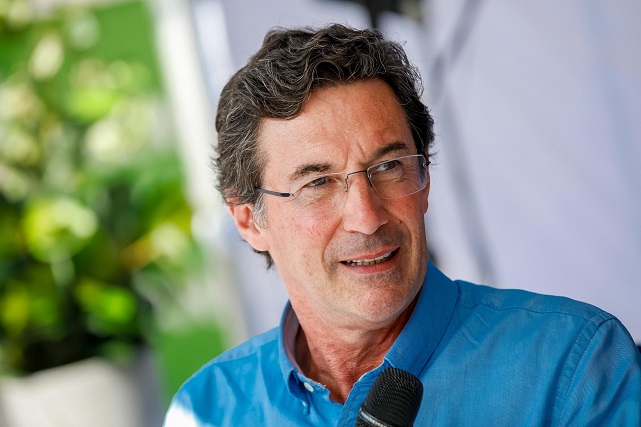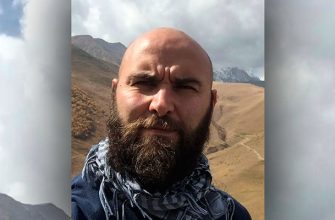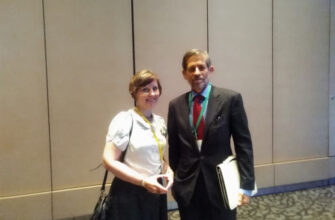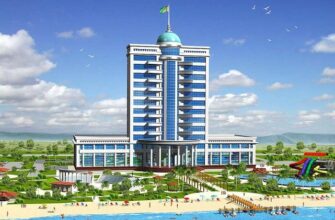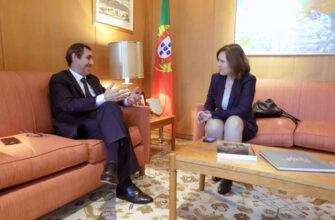European experience in regional development is very precious for readers of “E-Vesti”. As soon as we learned about a new interesting project that is being implemented in the European Union, we decided to write about it.
The author of the project is Mikel Landabaso (Director of Urban and Territorial Development unit of European Commission), and we are pleased to get an opportunity to discuss the project with the founder. Kindly read his exclusive interview for “E-Vesti”, and you will see how it became possible to achieve prosperity of small cities.
EV: Regional development is one of the most important things for each country, especially when we talk about small towns within these regions. Kindly tell us, how your project “My Region, My Future” became possible, and what goals have you set?
Mikel Landabaso: Rural areas account for a great part of all EU territory. Despite this, urban areas receive the most attention in the media, which can leave rural communities feeling underrepresented at best and neglected at worst. For this reason, the European Commission has decided that it is time to reach these communities in order to demonstrate that the EU works tirelessly on their behalf through myriad projects, programmes and funding operations. To achieve that, our communication campaign ‘My region, My Future’ will have a important presence on the ground, where the people are. As such, our rural EU roadshow will be visiting a selection of local events and fairs in rural communities in seven Member States (Latvia, Poland, Greece, Italy, Spain, France and Hungary) to engage with citizens on the ground. At the same time, a wider awareness campaign will be complementing these local activities and will attempt to reach individuals throughout these regions via a range of media channels, demonstrating real-life examples of how specific EU initiatives and policies contribute to regional and rural development. We wish to display that living in rural areas offers great opportunities and has a real community impact, by enabling the inhabitants to reach a more informed view of the EU and its tools for supporting them.
EV: How long will it take for rural areas to reach the goal of development?
Mikel Landabaso: It’s hard to say exactly when the goal of development is reached – let alone how long this will take! However, one thing that is certain to help dramatically is investing in public services and local emerging businesses. This is the key to boosting both local economies as well as the morale of these peripheral communities, and can encourage a snowball-effect of development, inspiring not only a sense of stability, but also one of pride and belonging – belonging not just to a smaller local, but also to a wider European community. But of course, development is not an end goal, but more of a process. Every community should feel empowered to strive for improvement however it can, to make sure that citizens are always able to harness their own future and feel fulfilled – no matter where they live.
EV: How did you choose the target regions/areas for the project? Did they need to have some particular features?
Mikel Landabaso: The seven target countries for the ‘My region, My future’ campaign were selected on the basis of three main criteria: having a high proportion of rural territory, receiving a high amount of EU funding for development, and also presenting a widespread disconnect and lack of public awareness surrounding the local EU support. Perplexingly, the countries, which receive the most EU funding, are also the ones most likely to harbor distrust for the EU. The selection of focus regions within these countries was made in collaboration with the local Representations. During the design phase of the campaign, brainstorming meetings were organized in all 7 focus countries, in which rural stakeholders and local partners joined the campaign team and the local Representation to offer insight on the most appropriate focus regions, target audience segments and topics of interest in rural areas per country. On the basis of the results from these meetings, one key criterion of the final selection of focus regions was having at least 50% of their population living in rural areas. These regions also needed to, despite the disconnect to the EU, provide opportunities to address the target audiences and also host numerous activities subject to EU support, such as agriculture, SMEs, healthcare, education and environmental sustainability.
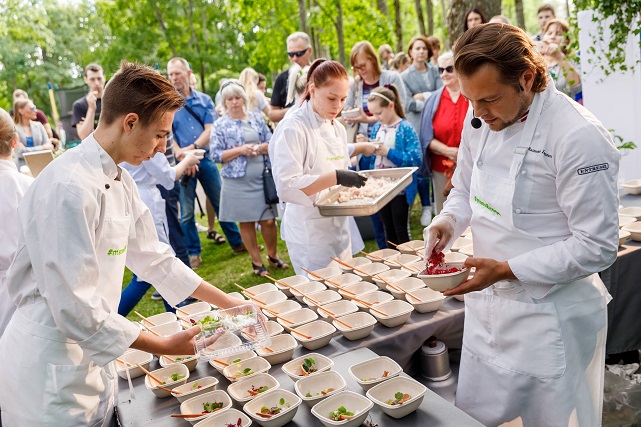
EV: Development is usually encouraged through joint efforts of national governments, local authorities and private businesses (public-private partnerships). What development mechanisms does the EU use and how did these help shape this communication campaign?
Mikel Landabaso: EU funding can be managed jointly by the European Commission and national authorities, directly by the European Commission or indirectly by other authorities inside or outside the EU, depending on the nature of the funding concerned. The EU encourages development through joint efforts by working with national and local governments to support initiatives intended to benefit each region of each Member State. In fact, the EU mostly operates in the background, leaving many national and regional tasks to local authorities. After all, these are the people who best understand the situation at hand and who live in the communities that they serve. The EU only steps in to provide assistance, guidance and financial support, when this is required and requested by a country’s local governing bodies. Additionally, public-private partnerships are becoming an important procurement method for large infrastructure projects. Due to their complexity, such collaborations require more detailed project preparation in order to achieve appropriate risk sharing with the private sector. That being said, direct EU funding support for public-private partnerships has been available since 2010.
EV: What is the focus of rural/ small town development? Is it important to save the traditional ecosystem together with following modern trends like digitalization?
Mikel Landabaso: In rural areas, the EU focuses primarily on the creation of employment opportunities, the development of modernised digital infrastructure, the adoption of efficient, environmentally-friendly technologies, nature conservation, access to education and training, and safeguarding traditional customs – including unique regional products. It is of course paramount to find that balance between conserving tradition and embracing modernisation. It is at the core of EU values to protect cultural heritage and help communities to preserve their local traditions. At the same time, tools such as high-speed internet access, cutting-edge agricultural technology, and online platforms supporting anything from education to communicating with local authorities should also be within reach of all communities to facilitate their development. The aim is for rural areas to benefit from both traditional and modern practices – and each individual community finds a unique way to balance this.
EV: Do you have an ideal of the modern small town/ village in Europe? Could you describe it, please?
Mikel Landabaso: In order to envisage what an ideal small town or village may look like, we must consider the key issues that many of these communities face today, and work on resolving them. A very pertinent example is rural depopulation, which contributes to an aging population with low birth rates. This is due mainly to an exodus of young people to the cities or abroad, in order to find more opportunities. As such, the answer lies in making rural areas more desirable for young people – to ensure that they do not have to leave, in order to secure stable and inspiring employment or training. Another common concern among rural populations is that there are often fewer services available to them – for instance, education, health and leisure facilities. If we were to imagine an ideal small town or village, it should have easy access to these amenities. However, it is not often possible to have a hospital or a high school in every village or small town. As such, we also need to invest more into infrastructure to ensure that better connection to larger cities, so that local communities can enjoy rural life without forgoing access to services. This of course will also be further incentive for young people to stay, and to stabilize the dependency rate.
EV: You’ve started ‘My regions, My future’ campaign in Latvia, where you personally met and exchanged ideas with locals. Is it important to inform people and discuss with them development?
Mikel Landabaso: Of course – the EU must facilitate a healthy dialogue with every citizen, community, region and Member State. While the EU may appear to be a large, impersonal organisation – especially in regions where its physical presence is less strong – it is actually working behind the scenes every day at local level to improve the lives and safeguard the futures of EU citizens. The EU wants to open itself up to conversation and communication with citizens, families, community leaders, entrepreneurs, local authorities and others living in communities both large and small. By being there for people, listening to them and lending a helping hand at the right time, citizens will hopefully understand the true benefit of the EU and take advantage of its many programmes and policies. This is exactly the reason why we believe that this communication campaign is more relevant than ever and why we decided to do things a bit differently by approaching rural communities and going to where the people are.
The campaign and rural roadshow launched in Latvia on August 3rd in Rēzekne City Festival, and travelled around the country during the whole month (August 10th Ludza City Festival, August 17th Preiļi City Festival and August 31st Milk, Bread, and Honey Festival in Jelgava). Hundreds of people visited our EU van, took part in fun activities and engaged with EU experts, who were able to answer their questions and offer tangible advice. The rural roadshow is currently in Spain, where it first visited the Zafra International Fair on 4-6 October and, after 6 stops, will conclude its trip on 23-24 November at the Feria Agroalimentaria de Santa Catalina in Luarca.
EV: You joined the Roadshow in Latvia and were accepted there in a very warm manner and tried their local products like pupuchi beans. What did you like most of all?
Mikel Landabaso: It was great to have such a great introduction to Latvian culture! I attended the roadshow stop in Jelgava and I have to say that the highlight of the event had to be the cooking show. The famous Latvian Chef Raimonds Zommers cooked for the visitors, with the help of local students that benefitted from the Youth Guarantee Scheme, and invited everyone afterwards to try the prepared meals that contained only local ingredients. This of course included Pupuchi beans. Being an initiative, which received EU funding and is now a national favourite, the representative of the company Kristīne Ozoliņa also joined the event to share her own experiences with EU support and her rural business. The best part of the event, both for me personally but also for the hundreds of participants, was being able to hear inspiring stories like this first-hand and see how EU funding is directly touching people’s lives, impacting rural areas and transforming local communities.
***
In addition to the interview, “E-Vesti” magazine is glad to inform our readers of new appointment of Mr. Mikel Landabaso. He recently became Director of “Innovations and growth” at the Joint Research Center – Seville, of the European Commission. We wish him all the best in his new (higher) position!
